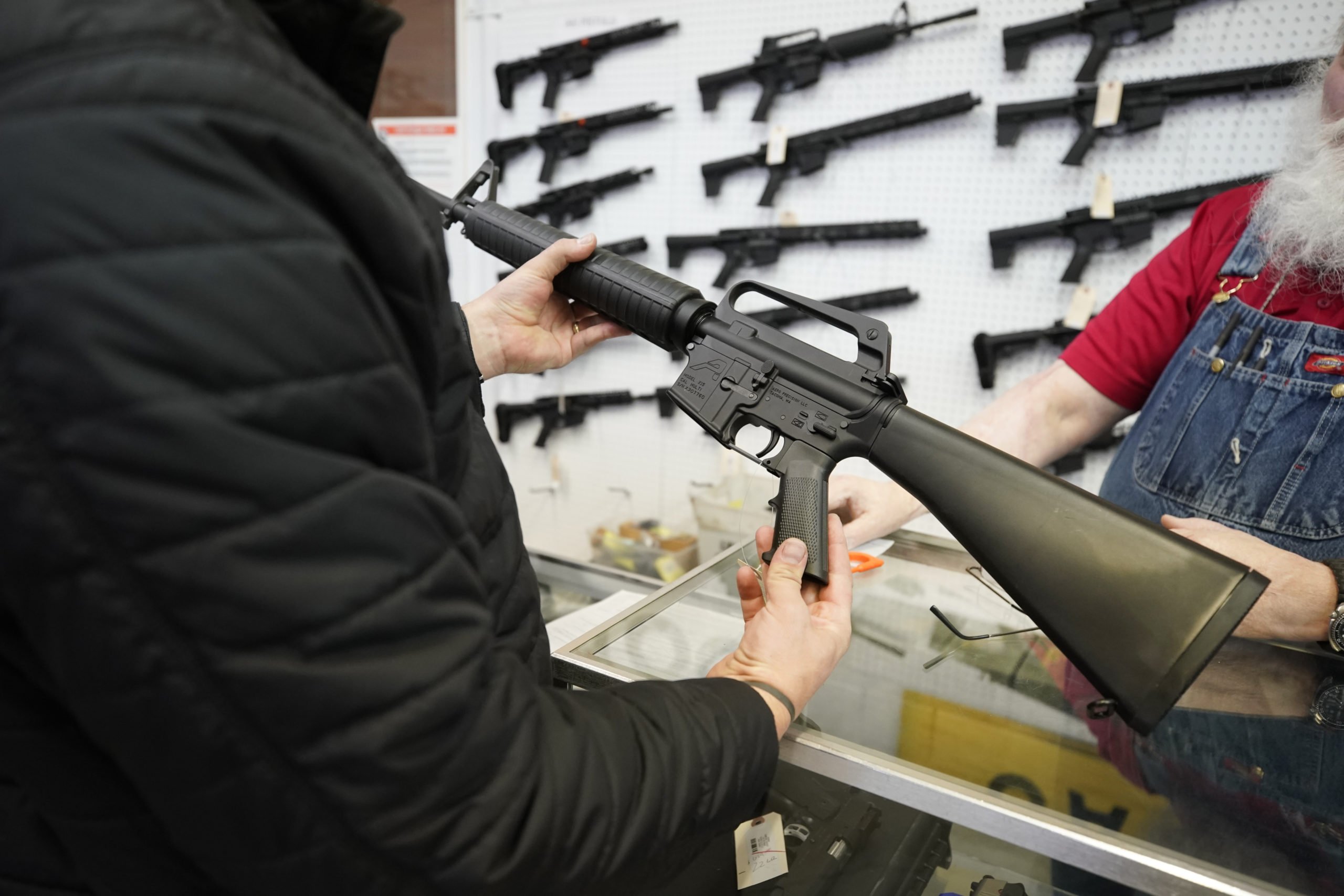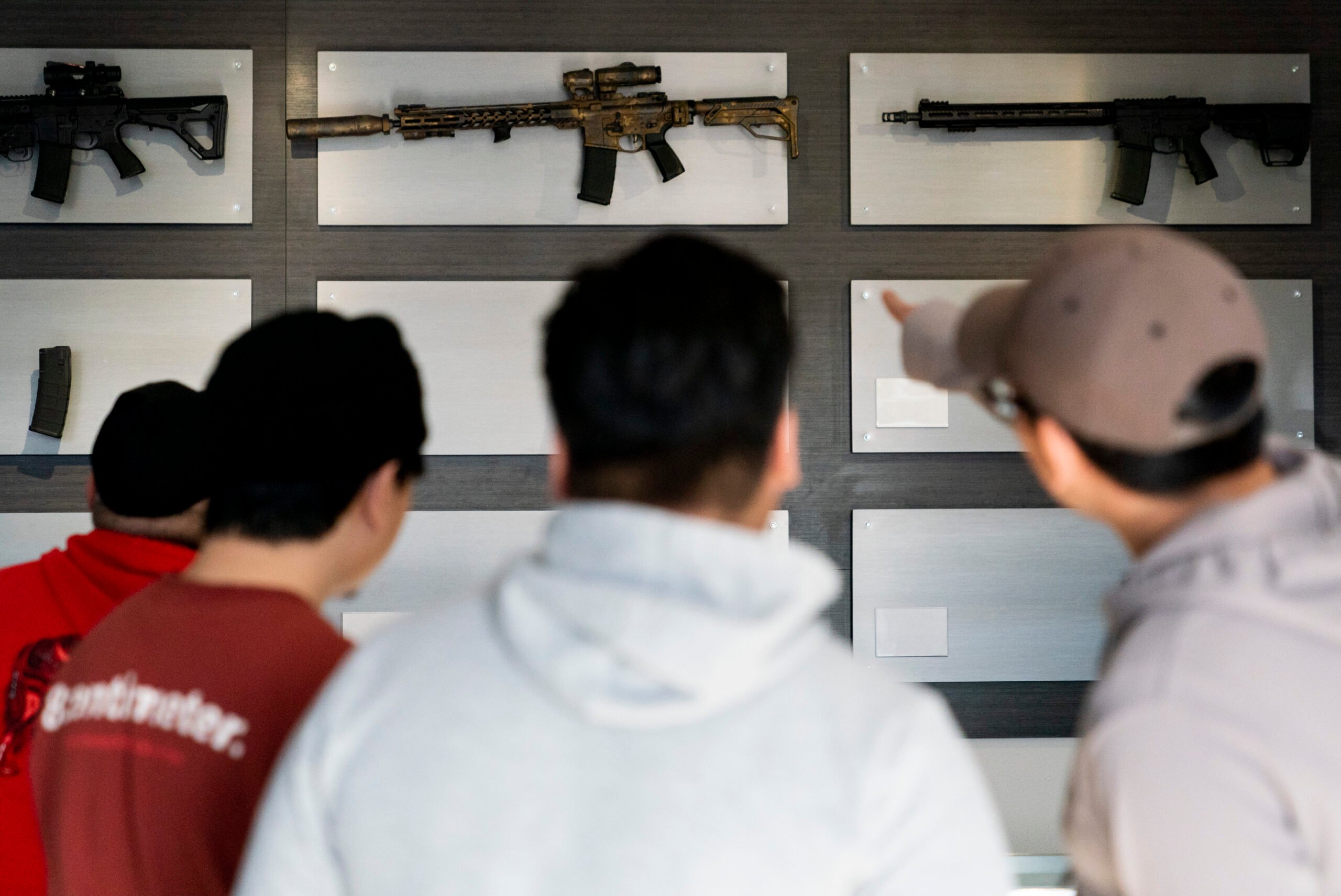On August 26, an avowed white supremacist opened fire in a Dollar General in a Black neighborhood in Jacksonville, Florida, killing three people. As in many high-profile racist shootings in recent years, including Buffalo, El Paso, and Pittsburgh, the assailant used an assault-style rifle.
Hours after the Jacksonville story broke, the National Rifle Association tweeted that “millions of law-abiding citizens own and use AR-15s to defend themselves and their families.” It’s true that more gun owners are buying AR-style rifles for protection. In March, The Washington Post estimated that 16 million Americans owned an AR-15, and asked 400 of them why. The most common reason given: self-defense.
Other gun owners say AR-style rifles aren’t practical for self-defense, including former Washington, D.C. police officer Michael Fanone, who responded to the January 6 Capitol insurrection. An NRA member and former gun seller, Fanone wrote after the Uvalde, Texas, school massacre that an AR-style rifle is “the last gun that I would recommend” for self-defense.
One reader asked us to get to the bottom of this, writing: “Many gun owners claim to buy assault-style rifles for defense. So how many documented cases are out there where someone actually defended themselves with an assault-style rifle?”
What the data says
First, we went to Gun Violence Archive, the only resource that aims to track all individual incidents of gun violence in America. We searched the database for entries tagged with “assault weapon” — which is how the ATF refers to AR-style rifles and is defined by GVA as “AR-15, AK-47, and all variants defined by law enforcement” — and “defensive use,” going back to GVA’s launch in 2014. The search returned 190 incidents.
We eliminated 20 because they featured AR-style rifles and unarmed self-defense, meaning someone other than the victim had or used a gun.
The incidents largely occurred in states with loose gun access laws and high rates of gun ownership. Florida recorded the most incidents (10) with Texas close behind (7).
Home invasions, arguments, domestic violence
The most common situation in which a legal gun owner defended themselves with an AR-style rifle was a home invasion: 30 of the 51 incidents involved rifle owners confronting burglars or trespassers. In 20 of the home invasions in which a gun was used defensively, one or more suspects was wounded or killed. In four of those incidents, the self-defense shooter was wounded; in one incident, the self-defense shooter was killed.
Four of the defensive gun use incidents, commonly referred to as DGUs, were business robberies. In two of those cases, the suspect was killed by the rifle carrier. The next most common circumstance for a rifle-involved DGU was an argument or fight (six), and intimate partner or family violence (five).
Twice a rifle owner intervened in a mass shooting. The most recent instance was at a 2022 anti-police brutality demonstration in Portland, Oregon, after someone opened fire on a crowd of protesters, killing one person and wounding five others. A rifle-wielding protester shot the gunman in the hip, ending the rampage.
Following a 2017 shooting at a church in Sutherland Springs, Texas, during which an Air Force veteran killed 26 people, Stephen Willeford, a former firearms instructor who lived nearby, grabbed his AR-15 from his safe and fired at the shooter as he fled, hitting him twice. By disabling the shooter, who then killed himself, Willeford might have prevented further bloodshed, police said. (For his part, Willeford said he’s glad his shots weren’t the ones that killed the gunman: “We aren’t designed to take the life of another person,” he told Texas Monthly. “It damages us. It changes us.”)
In total, 33 suspects were killed in the rifle-involved DGUs, and another 17 were wounded.
One-third of the rifle-involved DGUs over the past decade didn’t result in injury or death. In five of those cases, people merely brandished a rifle to try to stop a fight, robbery, or domestic violence attack. In 13 instances, people used their rifles to fire warning shots.
Most suspects weren’t armed with rifles — but did have handguns
In the vast majority of the incidents (40), the assailant was also armed with a gun, most commonly a handgun. In three incidents, the aggressor was reported to be unarmed. In only seven of the incidents were the suspects also armed with an AR-style rifle. In one incident, a home invasion in Houston in 2019, an unarmed homeowner turned the tables on rifle-wielding burglars, grabbing one of their guns and killing him and two of his accomplices.
Defensive gun use carries some legal risk
“Stand your ground” laws in 30 states establish the right to use lethal force if you think your life might be in danger, regardless of whether that threat is equally lethal. But that’s not always enough to avoid arrest.
In 11 of the rifle-involved DGUs, the self-defense shooter was detained. Nine self-defense shooters were arrested as a direct result of the DGU, while the other two were arrested for another reason, like the presence of drugs at the scene or involvement in an unrelated case. Of the self-defense shooters detained, three were briefly questioned and released. One self-defense shooter had their case presented to a grand jury, as is standard in many jurisdictions when someone is killed with a gun. Two had their charges dropped. Three had jury trials and were acquitted.
The most prominent acquittal in such cases was that of Kyle Rittenhouse, who shot three people, two of them fatally, with an AR-style rifle after a Black Lives Matter demonstration in Kenosha, Wisconsin on August 25, 2020. Rittenhouse, then 17, wasn’t legally allowed to purchase a gun, so an 18-year-old friend bought it for him. He was charged with homicide, attempted homicide, reckless endangerment, and being a minor in possession of a dangerous weapon. He was acquitted on all but the gun charge — the judge threw it out on the eve of jury deliberations after Rittenhouse’s lawyers pointed to an exception in the law that allows minors to possess long guns as long as they’re over 16 inches long. Because his gun possession was deemed to be legal, we kept it in our dataset.
On May 31, 2019, a 41-year-old man in Warren, Michigan, grabbed an AR-15, which was propped up against the couch, and shot his live-in boyfriend, 30, who allegedly choked him after hours of drinking and arguing. He called 911 to report the shooting. Police said the gun was properly registered to him, but he was arrested and charged with second-degree murder, manslaughter, and two gun charges. He was ultimately acquitted by a jury.
“I’ve never been in a situation where I couldn’t breathe at all,” the self-defense shooter testified. “I honestly thought I was going to die.”
Read Next

What Is an AR-15 Rifle, Exactly?
Some of those who used rifles in self-defense were arrested afterward because they weren’t allowed to own guns, so we didn’t include them in our final count.
For a few, rifles saved lives
In a 2019 case celebrated by gun-rights activists, a woman in Lithia, Florida, who was eight-months pregnant, fired on a pair of home invaders with her husband’s AR-10 rifle. She’d grabbed the gun from a bedroom after the burglars pistol-whipped her husband, held her 11-year-old daughter at gunpoint, and demanded money. She didn’t know how to use the rifle and struggled with it before squeezing off a single shot, killing one of the intruders.
“(My wife) evened the playing field and kept them from killing me,” her husband said. (While the sheriff initially said the gun was legally owned, the woman’s husband later admitted to police that he sometimes sold marijuana out of the home; he does not appear to have been charged, so we included the incident in our dataset.)
In at least two incidents, the person using an AR-style rifle in self-defense wasn’t a gun owner at all. When four men carrying “large rifles” broke into a home in Houston in 2019, the homeowner, who was unarmed, grabbed one of their guns and shot them, killing three of them.
AR-style rifles can be unwieldy and complicated, and they’re not easily concealable. But for some, the weapon’s size is an asset. A man in Oswego, Illinois, who stopped a 2018 knife attack by brandishing an AR-15, said he grabbed the rifle over his handgun because “it’s just a bigger gun. I think a little bit more than an intimidation factor definitely played a part in him actually stopping.”
The man, a firearms instructor, added: “The AR-15 is my weapon of choice for home protection. It’s light, it’s maneuverable. If you train and know how to use it properly, it’s not dangerous.”
For some, a rifle couldn’t prevent tragedy
Sometimes an AR-style rifle stopped an attack but didn’t save a life. In Detroit in 2022, a man disarmed a rifle-wielding intruder and wounded his accomplice with it, then chased the other intruder and hit him with a rifle butt. But not before they’d killed his wife.
In 2017, an intruder armed with a .25-caliber handgun broke into a home in Coffeyville, Kansas, and killed one of the occupants, 47-year-old Kimberly Bell. Another occupant of the home, Reginald Johnson, 50, heard the commotion and grabbed an AR-15. He killed the shooter — but not before the shooter returned fire, hitting Johnson, who died.
On the National Gun Violence Memorial website, where gunshot victims are commemorated, Johnson was remembered as “Coffeyville’s big brother” who “always looked out for everyone.” He left behind two adult children and six grandchildren. Bell was remembered as “an angel on earth” who “prayed with me, for me, and for everyone.” She left behind three daughters and three grandchildren.
Graphics and additional reporting by Chip Brownlee.

